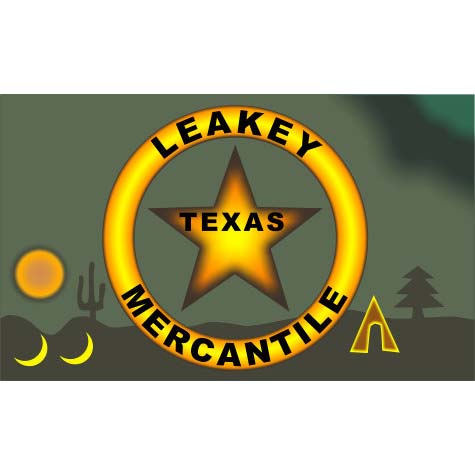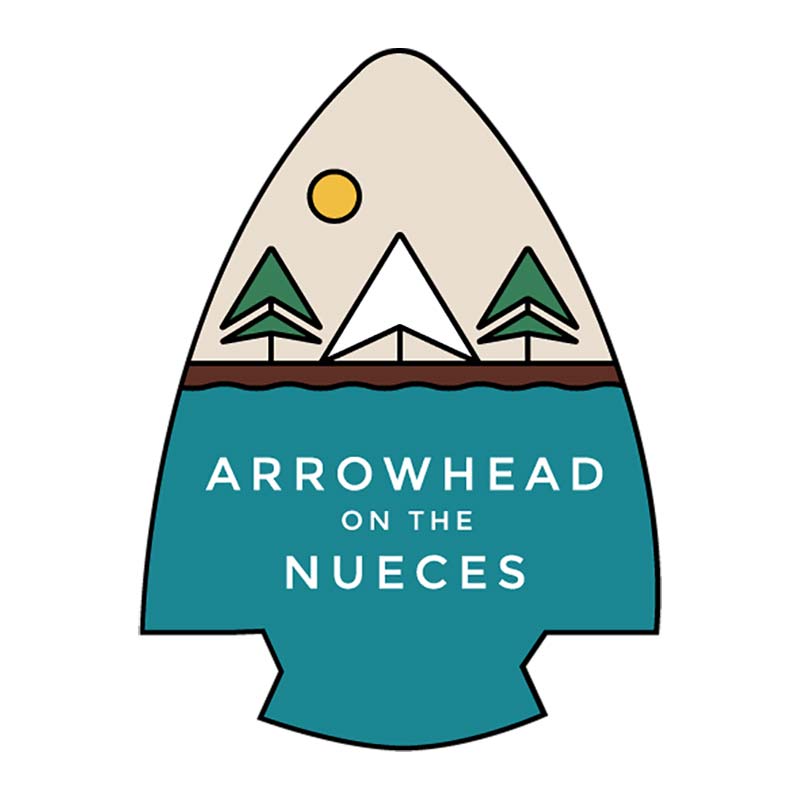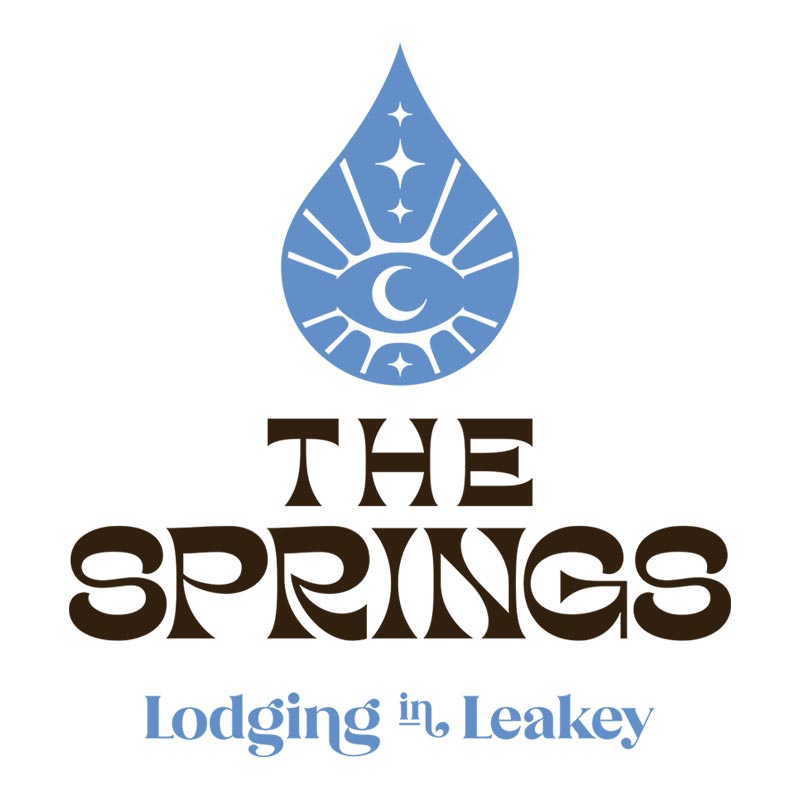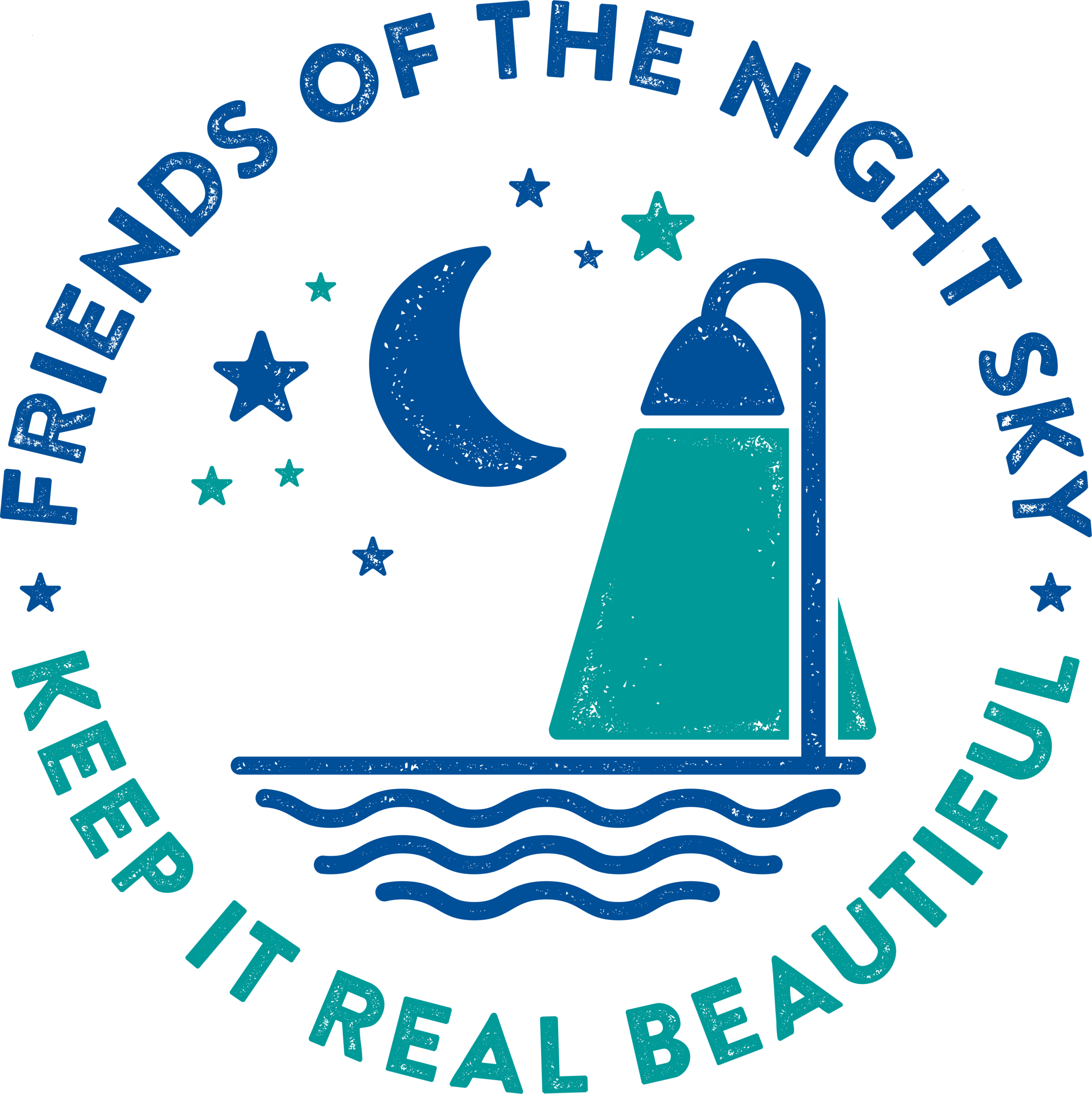 The goal of the KIRB Night Sky initiative is to provide education, guidance, and programming regarding the importance of dark Night Skies to Real County and the Frio and Nueces Canyons.
The goal of the KIRB Night Sky initiative is to provide education, guidance, and programming regarding the importance of dark Night Skies to Real County and the Frio and Nueces Canyons.
Real County is well known for its beauty and natural resources, including the Frio River, Nueces River, rolling hills and stunning vistas—day and night. KIRB works to educate landowners and visitors about the benefits of dark skies for wildlife, humans, and for the promotion of astrotourism. Programs are designed to inform homeowners, businesses, and tourists about ways you can help protect the scenic nightime beauty we sometimes take for granted.
What’s going on in our night sky DECEMBER 2025?
🌠 Meteor Showers: The Geminids Meteor Shower peaks around December 13–14, producing up to 150 meteors per hour. Meteors radiate from the constellation Gemini and are best viewed after 10 PM under dark skies. The Ursids Meteor Shower follows, peaking December 21–22, with about 10 meteors per hour radiating from Ursa Minor, best seen after midnight.
🌕 Moon and Constellation Pairings: Around December 4, the Cold Moon (a supermoon) rises and appears near Taurus, with bright stars like Aldebaran visible. On December 26, the Moon passes close to Saturn in the evening sky. Throughout the month, the Moon also pairs with Jupiter, Mercury, and stars in Leo and Gemini. The Orion constellation dominates the night sky, rising earlier each evening.
🌝 Full and New Moons: Full Moon: December 4 –Known as the Cold Moon, marking the long, cold nights near the solstice. New Moon: December 20 – Ideal for deep-sky viewing with minimal light interference.
Other phases: Last Quarter on December 11, First Quarter on December 27.
🌅 Sunrise and Sunset Times: December 1: Sunrise at ~6:43 AM, Sunset at ~5:03 PM.
December 31: Sunrise at ~7:08 AM, Sunset at ~5:33 PM. Daylight shortens early in the month, then begins to lengthen after the Winter Solstice on December 21.
🌌 Astronomical Twilight: December 1: Begins ~5:15 AM, ends ~6:30 PM. December 31: Begins ~5:40 AM, ends ~6:55 PM. Assuming the moon is not shining, this is the best time for observing faint stars and deep-sky objects.
🪐 Planets in the evening Sky: Saturn is visible in the southwest after sunset. Uranus and Neptune are present but require binoculars or a telescope. Morning Sky: Jupiter shines brightly in the east before sunrise. Mercury is low on the horizon and best seen during twilight. Mars remains faint and low, not ideal for viewing this month.
You can see a lot with your naked eyes or a set of binoculars.
Orion Nebula (M42): found in Orion’s Sword below the Belt, this bright emission nebula appears as a faint, glowing patch. It’s one of the most famous star-forming regions in the sky. Pleiades (M45): A stunning open cluster in Taurus, easily visible as a tiny dipper-shaped grouping of blue stars. Best viewed high in the eastern sky during early evening. Hyades Cluster: Another open cluster in Taurus forming a V-shape around Aldebaran. Though Aldebaran isn’t part of the cluster, it adds to the visual beauty. Andromeda Galaxy (M31): The nearest major galaxy to the Milky Way, visible as a faint smudge in the northeast sky under dark conditions.
🔭 Binocular highlights include the Double Cluster (NGC 869 & NGC 884), both neighboring star clusters in Perseus, appearing as twin hazy patches to the naked eye but spectacular through binoculars. Triangulum Galaxy (M33): A faint spiral galaxy near Andromeda. Though challenging with the naked eye, binoculars reveal its soft glow under dark skies.
For more celestial objects to see, check out the back of a the current month’s sky map.
Friends of the night sky business recognition program
WHAT IS IT?
- It is a program sponsored by Keep It Real Beautiful and Friends of the Night Sky, endorsed by the Hill Country Alliance, and supported by the Frio Canyon Chamber of Commerce. Its purpose is to recognize businesses and organizations that have Night Sky Friendly outdoor lighting and to encourage others to follow suit.
WHY IS IT?
- The goal is to protect and preserve the treasured natural resource that is the Hill Country’s starry nighttime skies. The program encourages the practice of responsible outdoor lighting. Such lighting will prevent light from escaping above the horizon into the nighttime sky, causing sky glow and glare, forms of light pollution.
WHAT’S IN IT FOR MY BUSINESS?
- The starry nighttime sky is a natural wonder to be enjoyed by all who live in or visit Real County and all our river canyons.
- There are almost 4 million people who live in light polluted urban and suburban areas, within short driving distances, where it is almost impossible to view pristine nighttime skies. For many of these people, an overnight trip to our area to see the stars would be a treat. “Heads in beds” means more business for our motels, B&Bs, restaurants, service stations, and other commercial entities as well as for our state park. Protecting our night sky from light pollution ensures this valuable resource will endure.
- You can advertise as “Night Sky Friendly,” attracting even long distance and international travelers who are seeking the natural beauty of dark night skies.
HOW CAN MY BUSINESS PARTICIPATE?
- All outdoor lighting on your premises is shielded and aimed downward so that no light trespasses beyond the business property boundary or above the horizontal plane into the sky. Lighting is directed only when and where it is needed for the task at hand. Motion detector lighting and extinguished lighting after hours is preferred.
- Lighting is not so bright as to cause glare or to reduce visibility in unlit areas.
- The color of outdoor lighting is amber or warm white versus bright white or blue. Lighting with a color temperature of less than or equal to 3000 Kelvin is ideal.
- Any business or organization in the area can request that the Friends of the Night Sky team conduct an evaluation of its outdoor lighting to determine if it qualifies for recognition and/or to recommend lighting solutions for problematic fixtures.
HOW WILL MY BUSINESS BE RECOGNIZED?
A business or organization that meets the criteria listed above receives recognition as a Night Sky Friendly Business with:
- A Certificate of Merit presented by Keep It Real Beautiful (KIRB) and Friends of the Night Sky for display inside your business.
- A window decal display to announce to customers your recognition as a Night Sky Friendly Business
- The right to use the Night Sky Friendly Business logo in your advertising, including on your website
- A listing as a night sky friendly business with a link to your business’s website on the websites of the Frio Canyon Chamber of Commerce, Keep it Real Beautiful, and the Hill Country Alliance
- Special recognition at any Night Sky events held by the Keep It Real Beautiful/Friends of the Night Sky
- Publicity in local media outlets
annual night sky posters
set of all 6 years now available

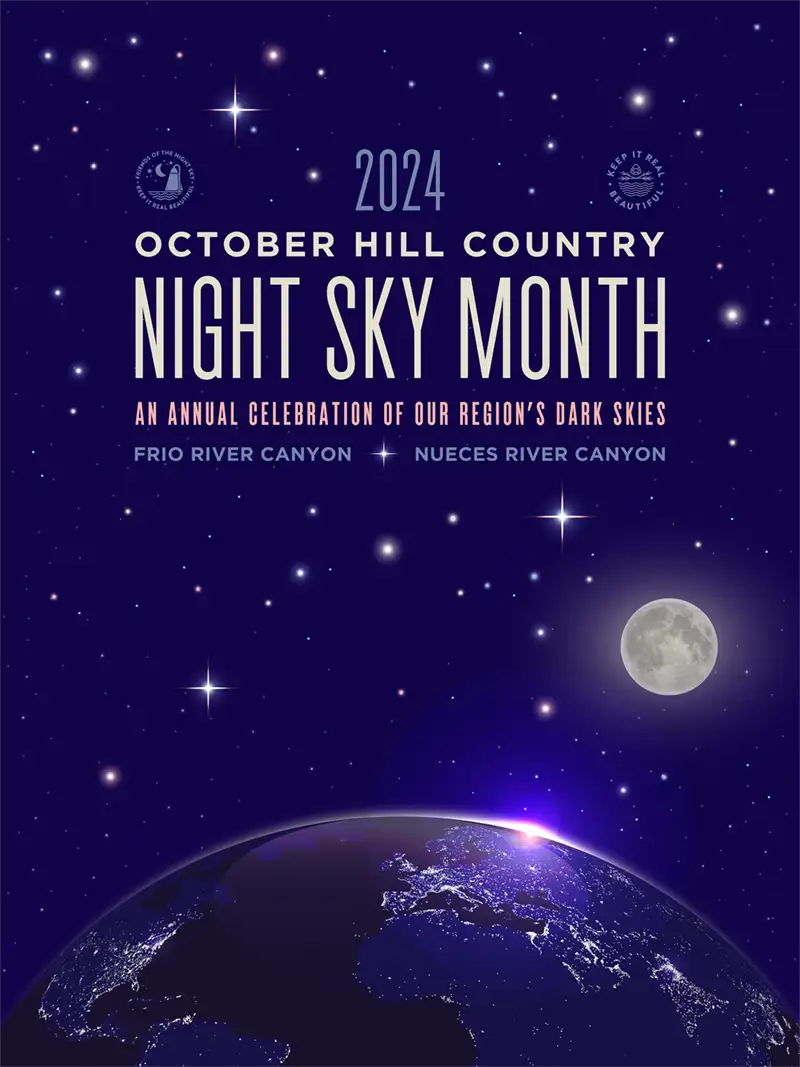
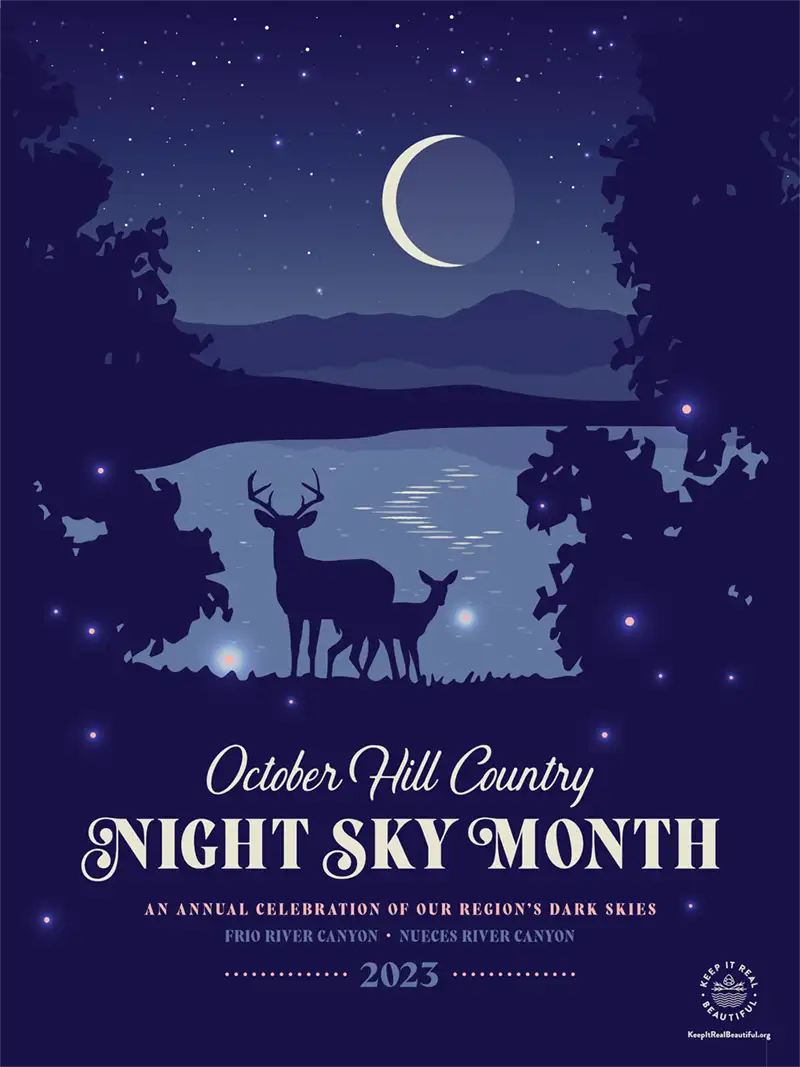
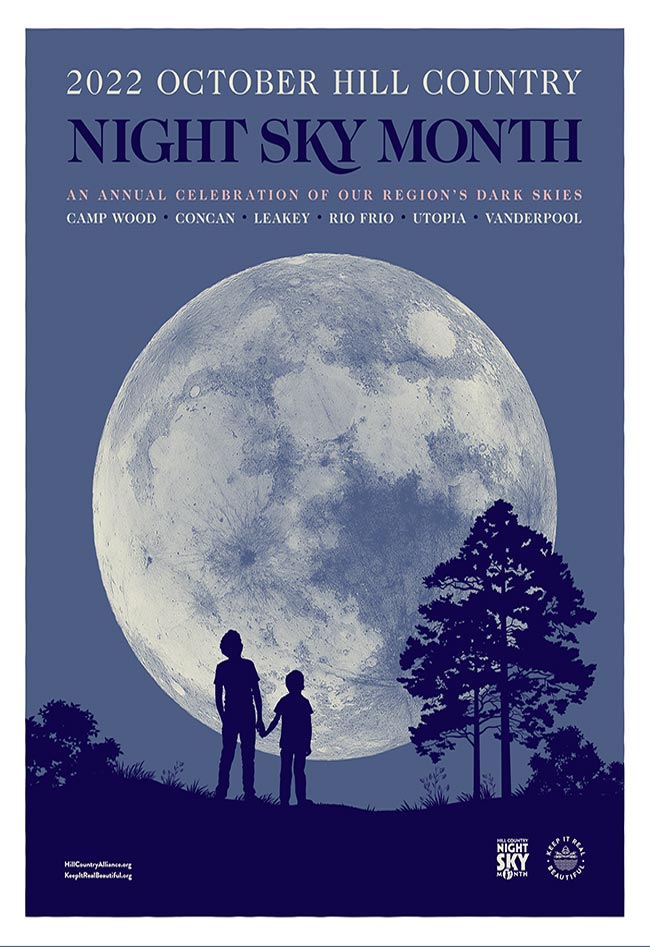
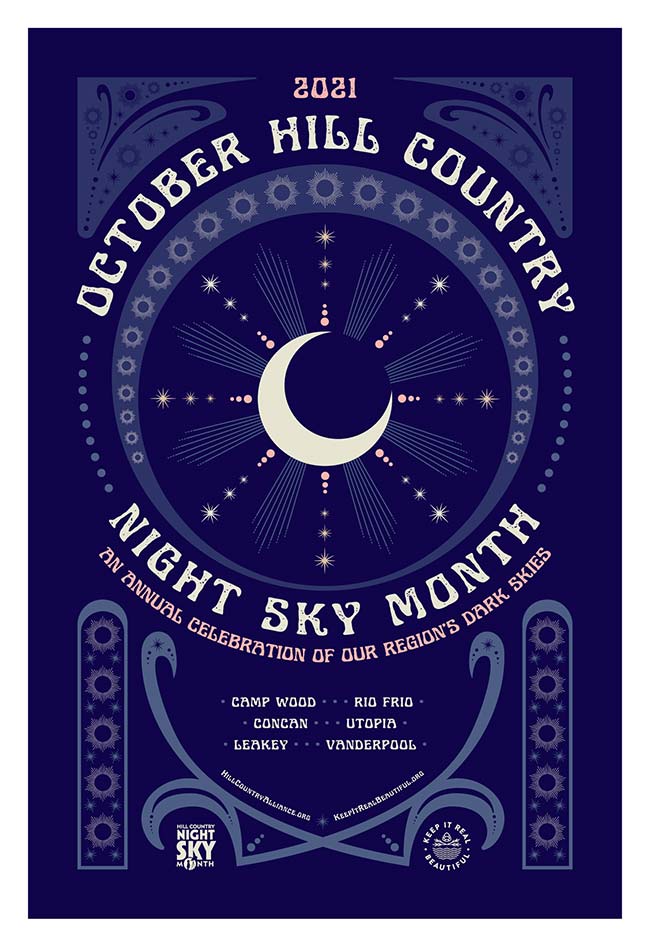
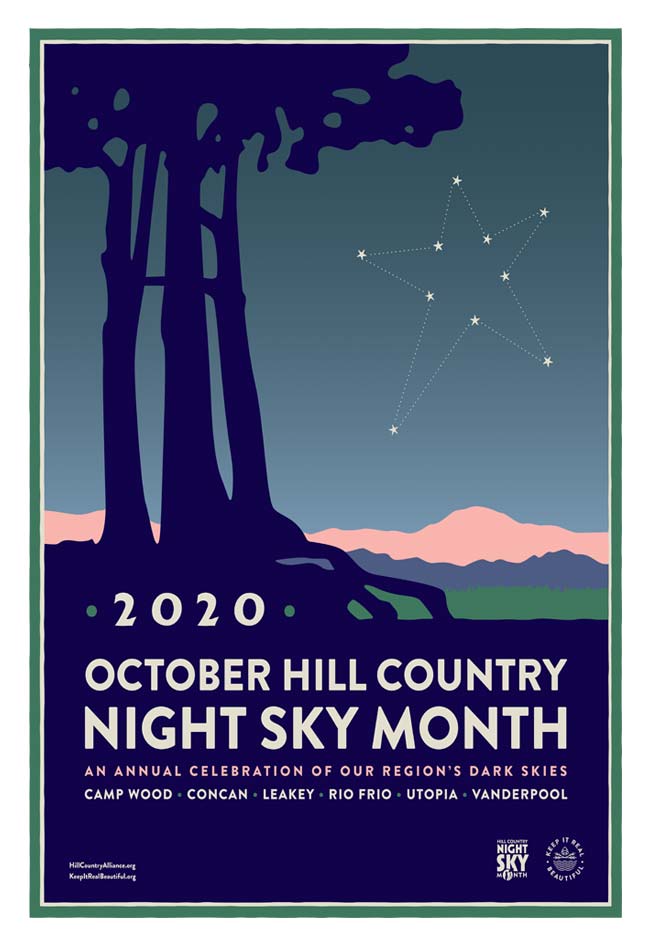
MORE INFORMATION:
Why should we decrease light pollution/improve Night Skies?
Hill Country Dark Night Skies Initiatives Gain Momentum in Real and Surrounding Counties
